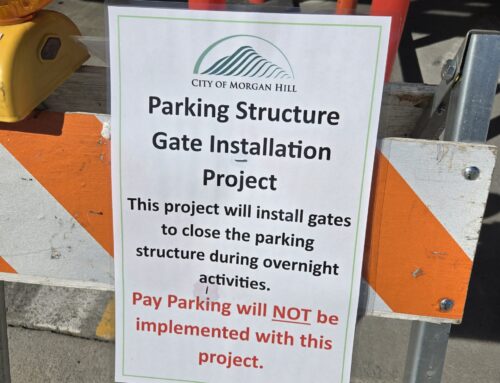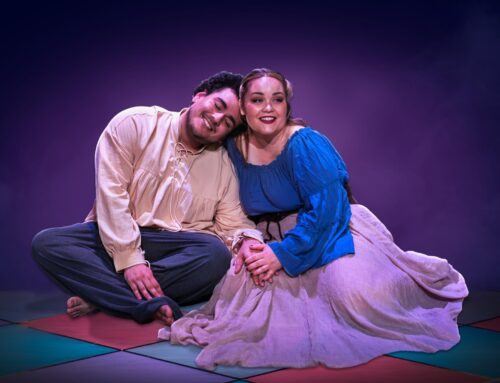More than two dozen eclectic pieces in museum’s collection
Published in the July 9-23, 2014 issue of Morgan Hill Life
By Lexi Julien

Visitors to the Wings of History open house enjoy a hot air balloon ride. Photo by Marty Cheek
The most famous airplane in the world is the Wright Flyer, built by Orville and Wilbur Wright and first flown on the beaches near Kitty Hawk, N.C. on Dec. 17, 1903. More than a century later inside a hangar near the San Martin Airport, visitors to the Wings of History Air Museum are often surprised to find a full-scale replica of the Wright brother’s aircraft.
The Wright Flyer exhibited in the museum was not built for actual flying, but this does not take away from the allure and dramatic story of the pioneering days of aviation behind the replica.
Several years ago, the copy of the aircraft was rented out and used in a United Airlines television commercial. The piece is one of about 25 in the museum’s eclectic collection of aircraft that showcases the history of aviation throughout the 20th century. Most of the museum collection reflects general aviation and antique airplanes and the “golden age” of airplanes, said Susan Talbot, the museum’s volunteer coordinator.
“We do have sort of an unusual collection,” she said. “Because we don’t buy anything, there doesn’t seem to be any rhyme or reason. Although we intended to be pre-World War II in our collection, we intended to be Northern California historical airplanes, it doesn’t work out that way because it just depends on who is going to give us what.”
The museum’s origins date back to 1964. Several aviation enthusiasts came together and formed the Watsonville Airshow and Fly-In and developed the idea to open an aviation history museum in the South Valley. The fly-in lasted until 1998, and throughout this 30-year span the creators of the show earned enough money to buy a parcel of land and build the museum. They bought it in 1978 from RV entrepreneur Irv Perch, a local resident famous for his Flying Lady Restaurant which was named after his wife who had a passion for airplanes.

Above: A full-scale replica of the “Wright Flyer” is on display at the Wings of History Air Museum at the San Martin Airport.
Photo by Marty Cheek
Some of the first items in the museum came from Perch and include a Ford Trimotor airplane and about 60 model airplanes that had been once featured in the Flying Lady Restaurant circling over diners on a dry-cleaner conveyor belt.
The museum is home to a unique collection of vintage gliders, including a 1930 Peel Glider Boat, a tin glider that was towed behind a speedboat to be lifted out of the water. There is also the 1938 Nelson Dragonfly, a powered glider that is lifted from the ground by use of an onboard engine and becomes a sailplane once airborne.
Visitors to Wings of History also discover an assortment of home-built airplanes, which tend to be rather unusual. Among some of the most intriguing designs is the 1970 Bower’s Flybaby, an inexpensive and easy to build model with fabric-covered wings. A rather odd piece in the museum’s collection is the 1957 Car-Helicopter. The aircraft consists of a Simca car built by Fiat with an attached Lycoming aircraft engine turning helicopter blades. It only flew once to a height of five feet.
A lot of home-built airplanes displayed at the museum are experimental, Talbot said.

A plane sits on the tarmac is available for tours inside. Photo by Marty Cheek
“They’re built by a person,” she said. “It’s not unsafe, it’s checked out by the FAA inspectors and they get a certificate just like any other airplanes. It’s just not built in a factory and brought to you. The person is responsible if there’s anything wrong with it.”
Volunteers at the museum spend many hours restoring antique planes in the collection. The 1940 Security S1-B Airster, designed by aviation pioneer Burt Kinnear, is currently being brought back to its original condition. The museum also has the only wooden propeller shop in the western United States, both repairing and making propellers from scratch.
The repair shop uses templates that are from the 1920s and 1930s to build new propellers, said museum volunteer Kris Miller. “They have some special templates that you slide over the propeller and they have to fit snugly at the center, it can never be loose because if you shave off too much wood, you’re done. It’s very precise, very labor intensive.”
The museum also is an FAA-certified repair station that people send propellers for repair or inspection or restored.
In spring the museum hosts an open house, which brings to the museum crowds of up to 2,000 people, Talbot said. This year’s event was the fourteenth annual and took place May 17.
“The draw is the free airplanes rides for kids 8 to 17 year old,” she said. “A lot of families will come for that, and then come to the museum and do fun things that we have for the kids.”
Also popular at the event are tethered balloon rides, she said.
The museum is a nonprofit organization that is 100 percent volunteer run. Miller, who flies a Cessna, is an airplane enthusiast who started volunteering a few months ago.
“I wanted to do something for our community,” Miller said. “I decided to volunteer here to take care of the airplanes and learn about their history.”
Entrance to the museum is free to the public. It is especially popular with families with young children and also accepts school field trip visits, Talbot said.
“We’re pretty friendly to visitors who come, she said. “We don’t get a lot of visitors so we’re not overwhelmed often. Often, if a family comes with little kids, we tailor the tour for them and take them around. We have two planes that they can get in and steer and whatever. We’re less formal than most museums.”
Lexi Julien is a senior at Mount Madonna School in Watsonville. She wrote this for Morgan Hill Life.






